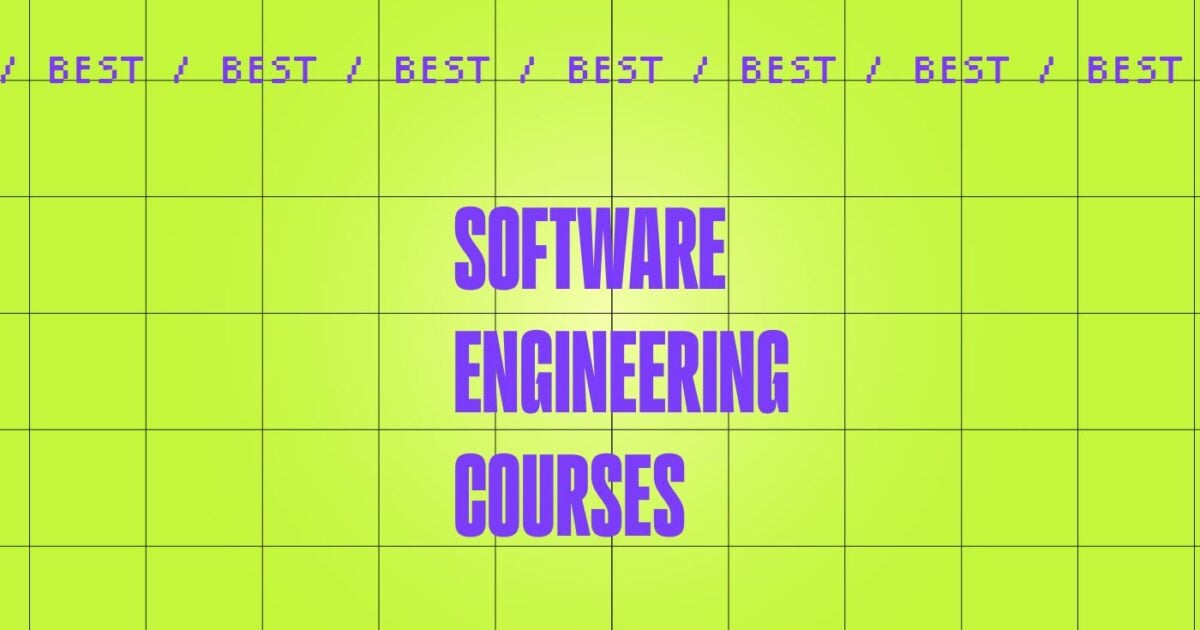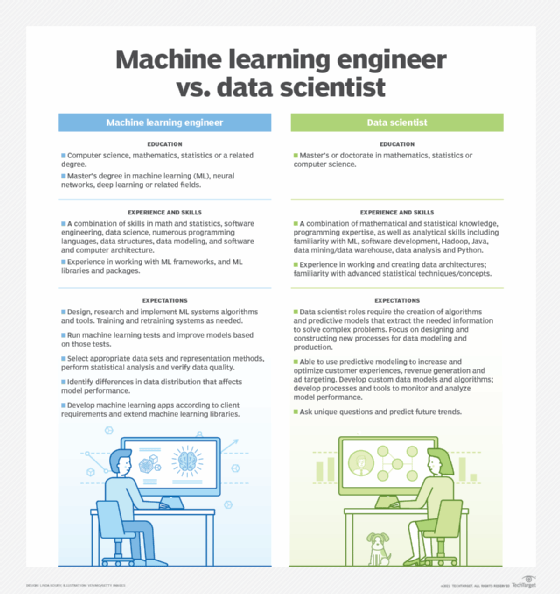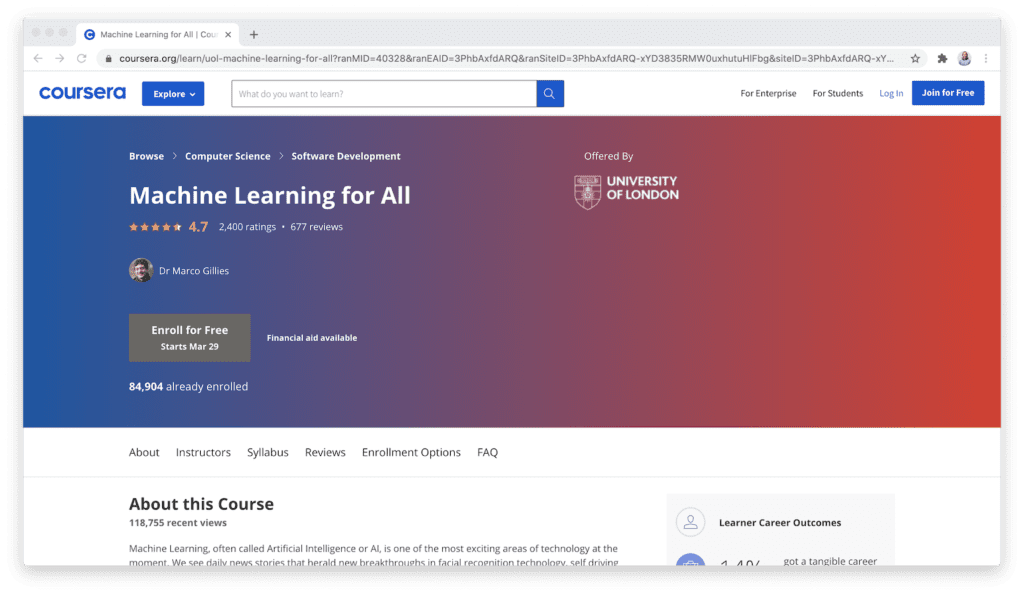All Categories
Featured
Table of Contents
You most likely recognize Santiago from his Twitter. On Twitter, every day, he shares a great deal of practical points about machine knowing. Many thanks, Santiago, for joining us today. Welcome. (2:39) Santiago: Thank you for inviting me. (3:16) Alexey: Before we go right into our main subject of relocating from software design to artificial intelligence, possibly we can begin with your history.
I went to college, obtained a computer science level, and I began building software. Back after that, I had no concept about machine discovering.
I know you've been using the term "transitioning from software engineering to artificial intelligence". I such as the term "including to my ability set the artificial intelligence skills" extra because I think if you're a software designer, you are currently providing a great deal of value. By incorporating machine learning currently, you're boosting the effect that you can have on the sector.
Alexey: This comes back to one of your tweets or maybe it was from your training course when you contrast 2 methods to learning. In this situation, it was some problem from Kaggle regarding this Titanic dataset, and you just discover just how to address this issue using a specific tool, like choice trees from SciKit Learn.
Top Guidelines Of Machine Learning Engineers:requirements - Vault
You first discover math, or straight algebra, calculus. When you recognize the math, you go to machine learning concept and you learn the theory. Four years later, you ultimately come to applications, "Okay, exactly how do I make use of all these 4 years of math to address this Titanic issue?" Right? In the previous, you kind of save yourself some time, I assume.
If I have an electric outlet right here that I require changing, I do not intend to go to university, invest four years understanding the math behind electrical power and the physics and all of that, simply to change an electrical outlet. I prefer to begin with the electrical outlet and find a YouTube video clip that helps me experience the trouble.
Santiago: I really like the concept of beginning with a problem, trying to toss out what I recognize up to that problem and recognize why it does not function. Order the tools that I need to solve that issue and start excavating deeper and much deeper and deeper from that point on.
To ensure that's what I typically suggest. Alexey: Possibly we can talk a little bit concerning discovering resources. You pointed out in Kaggle there is an intro tutorial, where you can obtain and learn how to choose trees. At the beginning, prior to we started this meeting, you stated a pair of books as well.
The only demand for that training course is that you recognize a little bit of Python. If you go to my profile, the tweet that's going to be on the top, the one that says "pinned tweet".
What Does Best Online Software Engineering Courses And Programs Mean?

Even if you're not a developer, you can begin with Python and work your way to even more device discovering. This roadmap is focused on Coursera, which is a system that I really, actually like. You can investigate all of the training courses totally free or you can spend for the Coursera membership to obtain certifications if you wish to.
Alexey: This comes back to one of your tweets or maybe it was from your training course when you compare 2 techniques to discovering. In this situation, it was some issue from Kaggle concerning this Titanic dataset, and you simply discover just how to solve this problem making use of a specific tool, like decision trees from SciKit Learn.

You first learn math, or linear algebra, calculus. When you recognize the mathematics, you go to equipment discovering concept and you learn the concept.
If I have an electric outlet right here that I require replacing, I don't intend to go to university, invest 4 years understanding the mathematics behind electrical power and the physics and all of that, just to transform an outlet. I prefer to begin with the electrical outlet and locate a YouTube video that helps me experience the issue.
Poor example. You get the idea? (27:22) Santiago: I truly like the idea of beginning with an issue, trying to throw out what I know as much as that problem and comprehend why it does not function. After that get hold of the devices that I need to fix that problem and begin excavating deeper and much deeper and much deeper from that factor on.
That's what I generally suggest. Alexey: Maybe we can speak a little bit regarding finding out sources. You discussed in Kaggle there is an intro tutorial, where you can get and discover how to make choice trees. At the start, before we began this meeting, you stated a couple of publications.
Getting The Machine Learning Course To Work
The only requirement for that course is that you know a little bit of Python. If you go to my profile, the tweet that's going to be on the top, the one that says "pinned tweet".
Also if you're not a developer, you can start with Python and function your means to more equipment discovering. This roadmap is focused on Coursera, which is a system that I really, truly like. You can audit all of the programs absolutely free or you can pay for the Coursera subscription to obtain certificates if you desire to.
Our Machine Learning In Production Statements
Alexey: This comes back to one of your tweets or possibly it was from your program when you compare 2 approaches to understanding. In this situation, it was some trouble from Kaggle about this Titanic dataset, and you simply learn exactly how to solve this trouble making use of a certain tool, like decision trees from SciKit Learn.

You first learn mathematics, or direct algebra, calculus. When you know the mathematics, you go to maker learning concept and you find out the theory.
If I have an electric outlet right here that I require replacing, I don't desire to most likely to university, spend 4 years understanding the math behind electrical power and the physics and all of that, simply to change an electrical outlet. I prefer to begin with the outlet and find a YouTube video that assists me undergo the issue.
Bad analogy. But you understand, right? (27:22) Santiago: I truly like the idea of starting with a problem, trying to throw out what I recognize up to that problem and comprehend why it doesn't work. Get hold of the tools that I need to fix that issue and start digging much deeper and much deeper and much deeper from that point on.
Alexey: Maybe we can chat a little bit regarding learning sources. You discussed in Kaggle there is an introduction tutorial, where you can obtain and learn exactly how to make choice trees.
How What Does A Machine Learning Engineer Do? can Save You Time, Stress, and Money.
The only demand for that training course is that you recognize a little bit of Python. If you go to my account, the tweet that's going to be on the top, the one that says "pinned tweet".
Also if you're not a designer, you can begin with Python and work your method to more artificial intelligence. This roadmap is concentrated on Coursera, which is a system that I actually, really like. You can audit every one of the training courses completely free or you can spend for the Coursera membership to get certifications if you intend to.
That's what I would certainly do. Alexey: This comes back to one of your tweets or maybe it was from your training course when you contrast 2 techniques to knowing. One method is the trouble based approach, which you just spoke about. You discover a trouble. In this instance, it was some problem from Kaggle concerning this Titanic dataset, and you simply discover how to address this trouble utilizing a details tool, like choice trees from SciKit Learn.
You first learn math, or straight algebra, calculus. When you recognize the math, you go to maker understanding theory and you discover the theory. Four years later, you ultimately come to applications, "Okay, how do I utilize all these 4 years of math to solve this Titanic issue?" Right? In the former, you kind of save yourself some time, I think.
Aws Machine Learning Engineer Nanodegree for Dummies
If I have an electric outlet right here that I need changing, I do not intend to go to university, spend 4 years understanding the mathematics behind electrical energy and the physics and all of that, just to change an outlet. I prefer to begin with the electrical outlet and discover a YouTube video that helps me go with the problem.
Negative analogy. But you obtain the idea, right? (27:22) Santiago: I truly like the idea of beginning with an issue, trying to throw away what I understand up to that trouble and recognize why it doesn't work. Then get the devices that I require to fix that issue and begin excavating much deeper and much deeper and much deeper from that factor on.

To make sure that's what I normally suggest. Alexey: Possibly we can talk a little bit regarding learning resources. You mentioned in Kaggle there is an intro tutorial, where you can get and discover exactly how to choose trees. At the start, before we started this interview, you stated a pair of publications.
The only requirement for that program is that you know a little bit of Python. If you go to my profile, the tweet that's going to be on the top, the one that claims "pinned tweet".
Also if you're not a designer, you can begin with Python and function your way to even more equipment understanding. This roadmap is concentrated on Coursera, which is a platform that I truly, truly like. You can examine all of the programs for free or you can pay for the Coursera subscription to get certificates if you desire to.
Latest Posts
How To Master Whiteboard Coding Interviews
How To Use Openai & Chatgpt To Practice Coding Interviews
Where To Find Free Mock Technical Interviews Online